Hong Kong, China – Monday, February 21st & Thursday, April 21st, 2011
Of the original four lands at Hong Kong Disneyland, Adventureland is my favorite, since it relies on Disney’s strength in landscape design and allows for creative use of texture and detail in ways that the other lands are more restricted by.
Hong Kong’s Adventureland combines aspects of the otherwise absent Frontierland, with the Jungle River Cruise doubling as the Rivers of America for a central water feature in the park, and with Tarzan’s Treehouse accessible by rafts like Tom Sawyer Island. The land’s identity is a little generic, lacking the global eclecticism of earlier Adventurelands or the storytelling specificity of Shanghai Disneyland’s Adventure Isle, but it makes up for it somewhat by shrinking the walkway width and providing more landscaped area in order for the jungle environment to feel completely immersive. However, the collection of attractions is the weakest of any Adventureland, with one show, one walk-through, and only one actual ride.
That one ride would be Jungle River Cruise. After Space Mountain, this was the second best ride in the park as of 2011. (Which really says something about the rest of the park’s attraction line-up.)
Because of Hong Kong Disneyland’s multilingual audience, this is the only Jungle Cruise in the world that offers continuous tours in multiple languages. Towards the boarding platform the queue splits into three for Cantonese, Mandarin, and English tours, with languages alternating between each dispatch. I’d imagine most of the skippers have to be able to tell jokes in multiple languages in order to rapidly adjust to fluctuations in demand for each language. The cast members always ushered me into the English-language queue as soon as they saw me approach (perhaps a little presumptuous, but I digress), but I might have liked to try one of the Chinese-language tours once just to compare experiences.
Apart from language offerings, Jungle River Cruise makes three big changes to the traditional Jungle Cruise format. Two I’d characterize as positive, one negative. The first positive is the start of the layout in this broad river that loops around the Tarzan Treehouse island. Not only is it a nice visual both on and off the boat, but allowing the attraction to play with a contrast in scale between wide open spaces and tight compression moments goes a long way to amplify the sense of adventure along the journey.
The big negative change is the entire middle portion of the Jungle River Cruise. Unlike the versions in California, Florida, and Tokyo with twisting layouts that quickly disorient guests, Hong Kong’s uses a simple pinched oval shape that it also borrows from Rivers of America. As a result I always knew what my orientation was to the rest of the park and it never achieved that feeling of being lost in the jungle. It was also just really short, with the ending coming at what would normally be the halfway point on the other Jungle Cruises… much of it devoted to the African savannah scenes which always felt most out of place on a ride called the Jungle Cruise.
But, once again on the plus side, the Jungle River Cruise does add a proper finale to the attraction. Borrowing inspiration from the Raging Spirits coaster at Tokyo DisneySea, the finale takes place amid a rock formation where we’re told the fire and water gods are having an argument. After some big pyrotechnic effects by the fire god, the water god unleashes a deluge that extinguishes everything with an impressive amount of fog. A little strange… but certainly a lot better than the other Cruise’s racist headhunters finales that have somehow managed to survive well into the 21st century.

 This young elephant had the amazing ability to continually exhale a high-pressure jet of water without ever intaking.
This young elephant had the amazing ability to continually exhale a high-pressure jet of water without ever intaking.
To get to Adventureland’s other main attraction, Tarzan’s Treehouse, you need to take the rafts across the Jungle Cruise river.
Like much else within this park, once you’re on the island Tarzan’s Treehouse is a near exact replica of the climbing walk-through experience at Disneyland that replaced the Swiss Family Robinson Treehouse.
Several books along the route summarize the story. This is one of the few instances in Disney parks where the author of an attraction’s story is credited.
 Our delightful storybook adventure begins with a terrifying home invasion and murder scene by an apex predator.
Our delightful storybook adventure begins with a terrifying home invasion and murder scene by an apex predator.

 But the lone survivor is rescued by an ape mother, and together they enter the Twilight Zone where images from their future haunt them in the mirror as they try to sleep.
But the lone survivor is rescued by an ape mother, and together they enter the Twilight Zone where images from their future haunt them in the mirror as they try to sleep.


 After the baby grew up to become totally ripped, he met Jane as she was drawing a picture of the beautiful jungle manscape.
After the baby grew up to become totally ripped, he met Jane as she was drawing a picture of the beautiful jungle manscape.
After that point the story kind of peters out, but there’s still some great views to be had overlooking Adventureland and more discoveries left behind by the set decorators.




 Adventureland is also home to the Theater in the Wild, which hosts the Festival of the Lion King show since the park opened in 2005. This is actually a copy of the show at Disney’s Animal Kingdom (which I wouldn’t see until a year later), a somewhat curious choice because that show was only made to take advantage of recycled parade floats in a low budget formula, but it was so popular they decided to make a permanent version here.
Adventureland is also home to the Theater in the Wild, which hosts the Festival of the Lion King show since the park opened in 2005. This is actually a copy of the show at Disney’s Animal Kingdom (which I wouldn’t see until a year later), a somewhat curious choice because that show was only made to take advantage of recycled parade floats in a low budget formula, but it was so popular they decided to make a permanent version here.
Like the Jungle Cruise, it was interesting to see how they managed to adjust the show for their multilingual audience. Rather than have separate shows performed in a different language, they had certain characters speak a different language, thus allowing them to repeat plot points while still making it seem like it’s all part of a single (bilingual) conversation. Clever, if not a bit mind-boggling after a while.
 Tomorrowland has the best program of rides in the park, not least because it’s anchored by Space Mountain. Like the other lands in Hong Kong Disneyland, the themeing is more decorative and less driven by story and place. Maybe that’s not a bad thing? It’s full of color and fun to look at, yet still far more cohesive than the band-aided American Tomorrowlands.
Tomorrowland has the best program of rides in the park, not least because it’s anchored by Space Mountain. Like the other lands in Hong Kong Disneyland, the themeing is more decorative and less driven by story and place. Maybe that’s not a bad thing? It’s full of color and fun to look at, yet still far more cohesive than the band-aided American Tomorrowlands.
It’s also the land that has changed the most since my visits, with Autopia replaced by the Iron Man Experience and Buzz Lightyear Astro Blasters transformed into Ant-Man: Nano Battle. Another major Avengers-themed E-ticket attraction is on the way in the coming years. If there one constant about Tomorrowland, it’s that Disney can never leave a newly built or refurbished land alone for long, but once it’s become a thoroughly muddled hodgepodge it will take decades before any serious attention is paid. I wonder if the Marvel expansion will ultimately become a separate designated land, as it’s not clear from photos how well the World Expo design of Marvel fits with the more whimsical, space-age, googie style of the original Tomorrowland.




 The Orbiter anchors the middle of Tomorrowland.
The Orbiter anchors the middle of Tomorrowland.
 This water play area is very toyetic in design, and not very popular on an overcast winter day.
This water play area is very toyetic in design, and not very popular on an overcast winter day.
 Speaking of toys, Buzz Lightyear Astro Blasters was one of Tomorrowland’s two major opening day attractions, and yet one more example of an almost identical copy of a Disneyland attraction.
Speaking of toys, Buzz Lightyear Astro Blasters was one of Tomorrowland’s two major opening day attractions, and yet one more example of an almost identical copy of a Disneyland attraction.
 I’m sure part of the reason this ride was selected was that the omnimover design gives a huge boost to total daily capacity for a park that would only open with four full-size attractions. In this case it was probably overkill; even during the busiest period I never saw this ride as anything other than a walk-on.
I’m sure part of the reason this ride was selected was that the omnimover design gives a huge boost to total daily capacity for a park that would only open with four full-size attractions. In this case it was probably overkill; even during the busiest period I never saw this ride as anything other than a walk-on.
 Given that a much better version of a Buzz Lightyear shooting dark ride opened at Shanghai Disneyland, I don’t mind this one getting re-themed to Ant-Man, especially with Toy Story Land opening across the park. I’m not sure what became of this Buzz Lightyear animatronic, though.
Given that a much better version of a Buzz Lightyear shooting dark ride opened at Shanghai Disneyland, I don’t mind this one getting re-themed to Ant-Man, especially with Toy Story Land opening across the park. I’m not sure what became of this Buzz Lightyear animatronic, though.


 Autopia holds two distinctions: the first major ride to open after the park (in 2006) and the first major ride to close (in 2016).
Autopia holds two distinctions: the first major ride to open after the park (in 2006) and the first major ride to close (in 2016).
While not quite as long as the Disneyland Autopia, it still shares a nice meandering layout through the hills and trees, and more importantly was the first Autopia to use electric vehicles. Meanwhile, more than a decade later, the other Autopias are still chugging along on repurposed lawn mower gas engines. It was also, due to the low capacity, the only ride in the park that would routinely sport a line longer than ten minutes.

 So far in this report Hong Kong Disneyland really hasn’t been that impressive, whether judged as a Disney theme park or otherwise. Yet my affinity for this place really comes down to the one attraction where I probably spent close to 50% of my cumulative time in the park: Space Mountain.
So far in this report Hong Kong Disneyland really hasn’t been that impressive, whether judged as a Disney theme park or otherwise. Yet my affinity for this place really comes down to the one attraction where I probably spent close to 50% of my cumulative time in the park: Space Mountain.
Hong Kong Disneyland’s Space Mountain is more or less an exact copy of the refurbished Disneyland Space Mountain, which makes sense as both projects were completed at the same time. Oddly, they apparently were completed by different manufacturers, with Dynamic Attractions supplying the iron for the California version while Vekoma worked its magic on the Hong Kong version. Apart from the differences in queue and theming, the biggest change I could notice was the vehicles, with the Hong Kong version feeling a bit taller and roomier.
But the key difference was this: Hong Kong’s Space Mountain has a single rider queue located directly adjacent to the exit. Few locals evidently knew how to take advantage of it, meaning I had it all to myself for hours on end.
Of course the regular queue was also usually pretty short, especially compared to the Disneyland version which hit a 170 minute wait on my most recent visit.
But the single rider queue was so easy and convenient for re-rides, I could easily spend more time seated on the coaster than walking around for the next ride. In fact, the biggest downside to this arrangement was that my eyes would eventually become adjusted to the dark, loosing the effect somewhat and necessitating that I go do something else for a while before once more getting the full experience.
 My review of Space Mountain is pretty much already covered in my Disneyland review, which was secretly more of a review of the Hong Kong attraction, by which point I had ridden the Hong Kong version exactly 50 times compared to only a couple of times on the California version. There are some differences: While Disneyland’s queue and station feels like a space station, Hong Kong’s offers a more direct, ground-level route into an expressionistic architectural representation of space. (Apparently some of the props were repurposed from the shuttered DisneyQuest attraction in Chicago.) The visual effects in the tunnel going up the lift are all a bit different. There’s also a “hyperspeed tunnel” located on the big drop in the middle of the layout, which consists of three “gate” panels that light up as you pass them. Unfortunately, this effect introduced another source of light into the space which may have contributed to how quickly my eyes could adjust to the darkness.
My review of Space Mountain is pretty much already covered in my Disneyland review, which was secretly more of a review of the Hong Kong attraction, by which point I had ridden the Hong Kong version exactly 50 times compared to only a couple of times on the California version. There are some differences: While Disneyland’s queue and station feels like a space station, Hong Kong’s offers a more direct, ground-level route into an expressionistic architectural representation of space. (Apparently some of the props were repurposed from the shuttered DisneyQuest attraction in Chicago.) The visual effects in the tunnel going up the lift are all a bit different. There’s also a “hyperspeed tunnel” located on the big drop in the middle of the layout, which consists of three “gate” panels that light up as you pass them. Unfortunately, this effect introduced another source of light into the space which may have contributed to how quickly my eyes could adjust to the darkness.
While the Disneyland Space Mountain might have a better, more mature art design, if I had to pick which version I’m more fond of, Hong Kong’s would win without question, just because I’ve never experienced a coaster that was so easy to go around for another ride. Perhaps too easy. On each of my visits, after doing a perfunctory round of the park, I’d always end up back at Space Mountain and would find I couldn’t escape. I’d step out into the sunlight, look around—Jungle River Cruise again? Not really. Buzz Lightyear? Nah. Small World? Ew, no!—and would get sucked right back into that single rider queue like a black hole of time and attention.
was so easy to go around for another ride. Perhaps too easy. On each of my visits, after doing a perfunctory round of the park, I’d always end up back at Space Mountain and would find I couldn’t escape. I’d step out into the sunlight, look around—Jungle River Cruise again? Not really. Buzz Lightyear? Nah. Small World? Ew, no!—and would get sucked right back into that single rider queue like a black hole of time and attention.
Even at the time I realized that this is probably not a healthy way to consume a theme park. A good theme park experience should be like a full course meal, balanced between all different kinds of dishes; whereas instead I was hunched over the bowl of Cheetos, always opting for the effortless empty calories instead of scouting out for which vegetable dishes I might dislike the least. But it was also… dare I say… the happiest I’ve ever felt at a Disney park. No FastPasses. No time crunch. No distractions. No worries. I could simply be aware of the present moment and go whichever way the wind blows, which just so happened to be directing me back into one of the best attractions that Walt Disney Imagineering has ever created.


 The rest of the park is also beautiful to explore at night. Perhaps it’s because the park isn’t built up with as many large structures as other Disney parks, but there seemed to be a lot less bright fill lighting, making for a more mysterious and dreamlike experience after dark.
The rest of the park is also beautiful to explore at night. Perhaps it’s because the park isn’t built up with as many large structures as other Disney parks, but there seemed to be a lot less bright fill lighting, making for a more mysterious and dreamlike experience after dark.
As you could expect, the fireworks in China were pretty good.
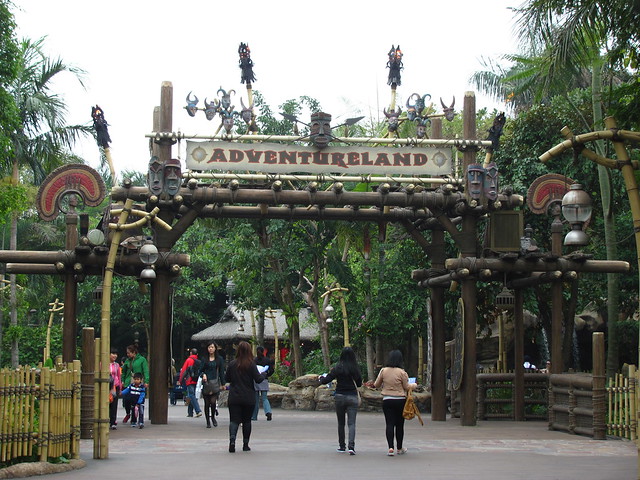

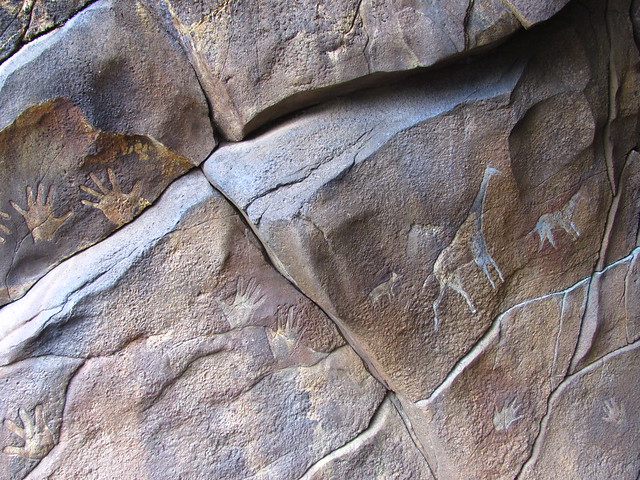
















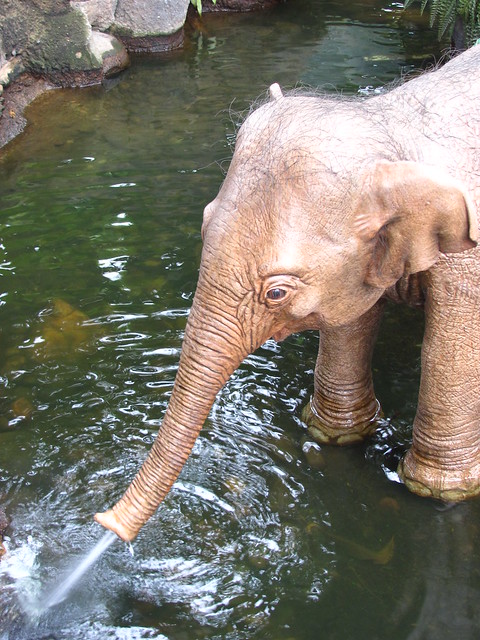

















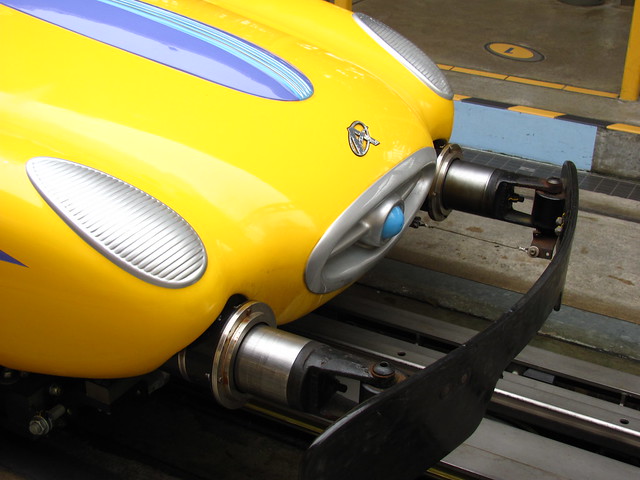



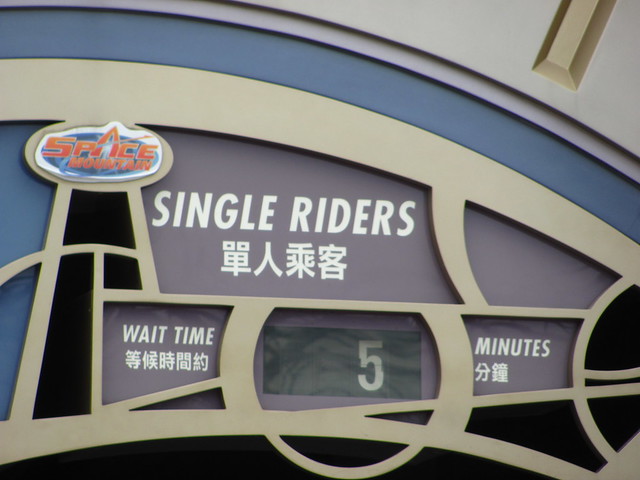













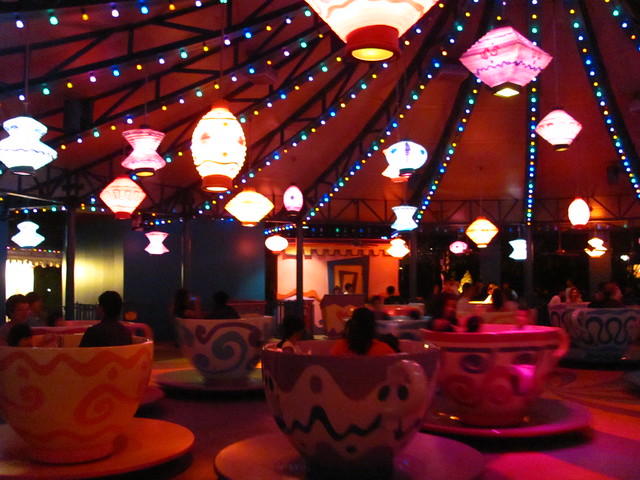





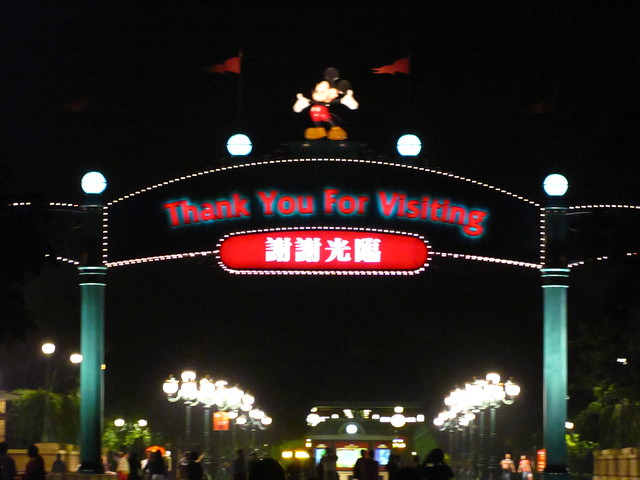
Comments